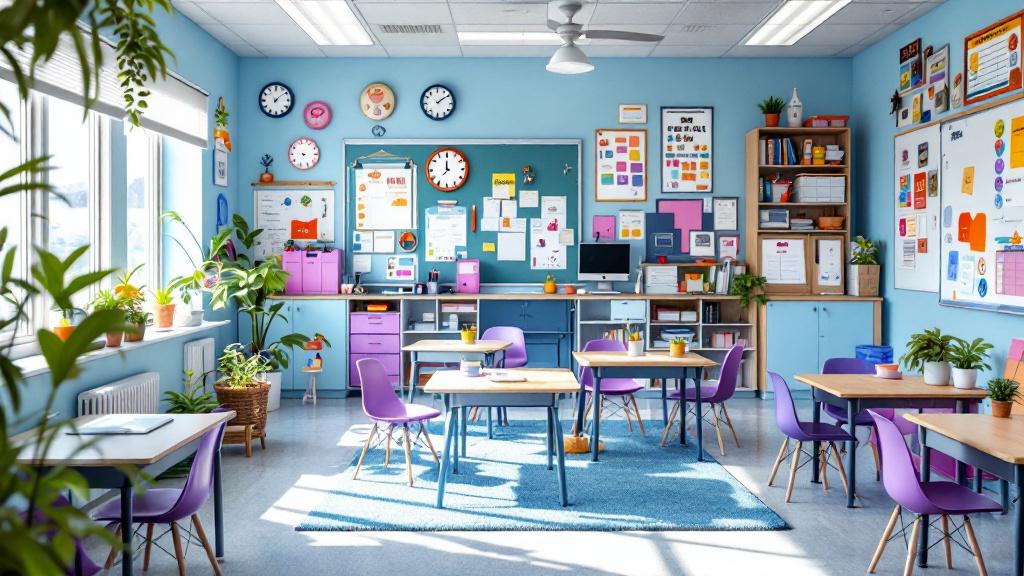Unlocking Learning Potential Through ABA Strategies
For children with autism, engaging effectively with homework can often be a challenge. Applied Behavior Analysis (ABA) therapy offers proven methods to support positive participation, making homework a productive and less stressful experience. This article explores how ABA therapy promotes engagement, manages behaviors, and incorporates evidence-based practices to foster meaningful learning experiences.
The Core Principles of ABA in Educational Settings

How does ABA therapy support positive engagement during homework for children with autism?
ABA therapy helps foster better homework engagement by customizing strategies that motivate children to participate actively. It uses positive reinforcement, such as praise or preferred items, to encourage completion of tasks. Techniques like behavioral momentum involve starting with simple, high-probability tasks to build confidence before moving on to more difficult work.
Structured routines and visual supports—like charts or step-by-step instructions—help reduce anxiety and make tasks clearer. Regular assessments and involvement from caregivers ensure that interventions fit each child's unique needs, making homework sessions more productive.
This approach creates a supportive environment where children feel motivated and capable, leading to increased participation and skill development during homework activities.
What strategies and methods are used in ABA therapy to enhance engagement in educational activities?
ABA therapy employs several effective strategies to boost student interest and involvement. Positive reinforcement rewards desired behaviors, encouraging children to stay engaged. Task analysis breaks complex skills into manageable steps, making learning less overwhelming.
Tools like visual supports—charts, picture cues, and schedules—help children understand expectations. Naturalistic teaching involves learning in everyday settings, integrating tasks with play and routines.
Additional methods such as Pivotal Response Treatment (PRT) focus on child-initiated activities that increase motivation. Token systems offer tangible rewards, motivating students through a system of earning and exchanging tokens for preferred activities.
Environmental modifications—like multisensory materials and offering choices—also support engagement. These strategies create dynamic, personalized learning environments that cater to each child's interests and needs, fostering active participation.
What benefits does ABA therapy provide in managing behavior and encouraging positive participation during homework?
ABA therapy significantly benefits children by addressing behavioral challenges and promoting positive involvement. It helps identify why certain behaviors happen, allowing tailored interventions to reduce disruptive or non-compliant actions.
By teaching functional skills—like organizing materials or following multi-step instructions—ABA empowers children to complete homework more independently. Consistent reinforcement of good behaviors increases motivation and confidence.
This structured approach helps create a positive learning environment, reducing frustration and promoting a child’s willingness to engage. Over time, ABA fosters improvements in behavior and task participation, making homework a more manageable and rewarding activity for children.
| Aspect | Strategies & Methods | Benefits |
|---|---|---|
| Engagement Enhancement | Positive reinforcement, task analysis, visual supports, naturalistic teaching, PRT, token economy, environmental modifications | Increased motivation, interest, and participation |
| Behavior Management | Functional behavior assessment, reinforcement, skill teaching, routines | Reduced disruptive behaviors, increased independence |
| Overall Impact | Structured routines, individualized plans, caregiver involvement | Better academic and social participation |
By integrating these ABA techniques into educational practice, schools can better support children with autism and other developmental needs, ensuring more effective, engaging, and positive learning experiences.
Utilizing Brain Breaks to Supplement ABA-Based Learning Strategies

What types of brain breaks support focus and engagement?
Brain breaks are short, structured pauses that involve physical movement, mindfulness, or sensory activities designed to help students refocus and recharge. These breaks usually last only a few minutes, making them easy to incorporate into classroom routines or homework sessions.
Different types of brain breaks serve various functions. Energizing activities like dancing or quick physical exercises boost blood flow and alertness, helping students to regain their focus after a period of intense work. Mindfulness exercises such as flower breathing or candle breathing induce relaxation and calm students down, especially beneficial for those who become overstimulated or struggle with self-regulation.
Sensory activities, which may involve tactile or visual stimuli, help students with sensory processing challenges stay engaged. For example, handling textured objects or engaging with calming lights can reset sensory overload, making it easier to return to learning tasks.
How do brain breaks improve focus and engagement?
Implementing brain breaks aligns with research indicating that physical activity increases blood flow to the brain, which enhances attention and learning speed. When students participate in movement or sensory activities, their alertness levels rise, allowing them to re-engage with lessons or homework more effectively.
Relaxing brain breaks also play a crucial role in calming students who are overly excited or experiencing emotional distress. These pauses provide an opportunity to regulate emotions, reducing behavioral disruptions and improving overall classroom or homework engagement.
For students with attention challenges, such as those with ADHD, brain breaks provide a necessary reset, helping to sustain concentration over longer periods. They also promote positive emotional states, making learning a more enjoyable experience.
How can brain breaks be integrated into homework routines, including distance learning?
Incorporating brain breaks into homework routines can significantly reduce frustration and improve persistence. Short breaks after completing a set of problems or learning segments can help students maintain motivation and focus.
For distance learning environments, brain breaks are adaptable tools that can be scheduled throughout virtual lessons or assignments. Teachers can guide students through quick movement or mindfulness activities via online platforms, or recommend apps and videos that facilitate sensory engagement.
Creating a structured routine that includes regular brain breaks prepares students mentally for ongoing tasks, aids in emotional regulation, and fosters a positive attitude towards learning. Parents and educators are encouraged to tailor these breaks based on individual student needs, ensuring they support sustained attention, emotional well-being, and overall learning success.
How does ABA therapy support positive engagement during homework?
Applied Behavior Analysis (ABA) therapy plays an instrumental role in supporting homework engagement for children with autism. It creates structured, supportive learning environments that promote independence and positive social interactions.
Through personalized interventions and carefully recorded data, ABA therapists identify what motivates each child and develop strategies such as positive reinforcement, prompting, and shaping to encourage homework participation.
ABA strategies help children build skills like following instructions, completing tasks, and staying seated—fundamentally enhancing their ability to engage with learning activities meaningfully. Reinforcing effort with praise or preferred activities encourages sustained participation.
Moreover, ABA therapy aids in teaching social and communication skills, like asking for help or sharing work, which improves interaction during homework. These structured approaches also help manage disruptive behaviors and foster emotional regulation, making the learning process more manageable and enjoyable.
How are ABA techniques used to improve engagement?
Teachers trained in ABA techniques implement methods such as positive reinforcement, prompting, shaping, and data collection to enhance classroom engagement. These strategies focus on understanding behaviors' functions and creating tailored interventions.
Assessment tools like Functional Behavior Assessments (FBAs) and direct observations identify specific triggers and motives, enabling effective plan development. Regular data tracking ensures progress is monitored and interventions are adjusted as needed.
By integrating these techniques, educators foster an inclusive environment where students with diverse needs can thrive. ABA methods support skill development—like attention, communication, and social interaction—while reducing disruptive behaviors.
How does ABA therapy support emotional regulation and social skills?
ABA therapy emphasizes teaching emotional regulation techniques and social skills critical for school success. Interventions include teaching children to recognize and manage their emotions, which promotes stable behaviors and better peer interactions.
Children learn skills like greeting others, taking turns, sharing, and problem-solving—foundational elements of positive social relationships. Verbal and non-verbal communication training enhances their ability to ask for help or participate in discussions.
By fostering these skills, ABA therapy helps students navigate social environments, improve peer relationships, and participate more fully in educational activities. This comprehensive approach not only supports academic growth but also promotes emotional well-being.
Organized overview of strategies and benefits
| Strategy/Method | Purpose/Benefit | Application Example |
|---|---|---|
| Movement activities | Increase focus, provide sensory input | Dancing, brisk walking, stretching |
| Mindfulness exercises | Calming, emotional regulation | Flower breathing, candle breathing |
| Sensory activities | Manage sensory overload, stay engaged | Tactile play, calming lights |
| ABA core techniques | Behavior management, skill development | Positive reinforcement, prompting, shaping |
| Distance learning adaptation | Maintain engagement remotely | Scheduled breaks, online activity cues |
In integrating brain breaks and ABA strategies, educators and parents can create effective routines that enhance attention, regulate emotions, and foster positive participation in both classroom and homework settings.
Incorporating Structured Routines and Visual Supports to Reduce Anxiety

How does ABA therapy support positive engagement during homework for children with autism?
ABA therapy creates a structured, supportive learning environment that encourages independence, student engagement, and positive social interactions. It uses evidence-based practices like positive reinforcement and data collection to tailor interventions for each child's needs. This tailored approach helps children develop critical skills, manage behaviors, and increase their ability to engage meaningfully in school tasks. By integrating these strategies into homework routines, ABA helps mitigate frustration and support sustained focus.
What strategies and methods are used in ABA therapy to enhance engagement in educational activities?
ABA employs a variety of techniques to improve how children participate in classroom and homework activities. These include:
- Positive reinforcement: Praising or rewarding desired behaviors to encourage repetition.
- Prompting: Providing cues that guide correct responses.
- Shaping: Reinforcing successive approximations toward the desired behavior.
- Task analysis: Breaking down complex skills into manageable steps.
- Data collection: Monitoring progress and adjusting interventions accordingly.
These strategies foster a predictable, supportive environment that promotes skill acquisition and reduces behavioral challenges, especially when tailored to individual learning goals.
The role of visual supports in learning
Visual supports are powerful tools that help reduce anxiety, support understanding, and organize learning in both classroom and homework settings. They include visual schedules, pictorial cues, and instructional scaffolding that provide clear, visual representations of expectations and steps, which are especially beneficial for children with autism.
Visual schedules outline daily routines or task sequences, helping children understand what to expect and stay on track. For example, a visual timetable for homework might show steps like reading instructions, completing questions, and taking a break.
Instructional scaffolding uses visual cues to guide children through learning tasks, gradually fading support as competence develops. These supports assist in reducing uncertainty and behavioral challenges, creating more predictable and calming learning environments.
How visual supports reduce anxiety and support structured routines
Implementing visual supports in structured routines helps students with autism by providing predictability and clarity. When students know what’s expected and see their plan laid out visually, they often experience less anxiety.
Visual supports also serve as cognitive aids that break down complex tasks into simpler, manageable steps. For example, a visual task analysis can guide a student through completing a science experiment or writing assignment, clearly illustrating each step.
By reinforcing routines through visual cues, educators and parents can foster independence, improve task focus, and promote emotional regulation.
Practical integration of visual supports and structured routines
Effective use of visual supports involves creating visual schedules, step-by-step guides, and cue cards tailored to individual needs. These are used regularly during homework, classroom activities, and daily routines.
Teachers can incorporate visual supports by:
- Using picture schedules that show sequence of tasks.
- Employing visual cues for transitions and behavioral expectations.
- Implementing color-coded or symbol-based task breakdowns.
Parents might use visual timers to help with time management or visual checklists to promote task completion.
Table comparing strategies for reducing anxiety and increasing engagement
| Strategy | Description | Benefits |
|---|---|---|
| Visual schedules | Visual representation of routines and tasks | Reduces uncertainty, promotes independence |
| Task analysis | Breaking down tasks into small steps | Eases complexity, builds confidence |
| Visual cues | Pictorial or symbolic prompts | Aids memory, reinforces expectations |
| Predictable routines | Consistent daily sequences | Decreases anxiety, increases compliance |
| Instructional scaffolding | Visual and physical prompts | Supports learning and skill mastery |
Implementing these methods systematically enhances learning experiences for children with autism, fostering better emotional regulation, engagement, and academic success.
The Importance of Data-Driven Interventions and Collaboration

How does ABA therapy support positive engagement during homework for children with autism?
ABA therapy plays a vital role in helping children with autism stay engaged and successful during homework tasks. It creates a structured environment where behaviors are carefully analyzed, and individualized strategies are implemented to promote positive interactions with learning activities. Through the use of reinforcement techniques such as praise, preferred activities, and prompts, ABA helps children develop skills like task completion, sustained attention, and independence. Additionally, ABA therapists frequently use data collection to monitor progress and adapt interventions, ensuring that each child's specific needs are addressed effectively.
What strategies and methods are used in ABA therapy to enhance engagement in educational activities?
ABA employs a variety of evidence-based strategies to improve student engagement and learning outcomes. These include positive reinforcement, which encourages desirable behaviors; prompting and shaping, which guide children toward correct responses; task analysis, breaking down complex activities into manageable steps; and data recording for ongoing assessment. These approaches are complemented by collaboration with teachers and families to establish personalized goals aligned with the child's developmental needs. Consistent use of these methods fosters a supportive learning environment where children can thrive academically and socially.
Use of data in ABA therapy
Data collection is central to ABA's effectiveness in educational settings. Teachers and therapists employ tools like functional behavior assessments (FBAs), direct observations, and ongoing data analysis to understand student behaviors, motivations, and progress. This information helps create tailored interventions that are responsive to each child's unique profile. Monitoring progress through data allows for timely adjustments to strategies, optimizing learning outcomes.
How does data support personalized goals and interventions?
Personalized goals are essential for addressing individual student needs. Data collected during therapy sessions help define specific objectives, such as improving attention span or reducing disruptive behaviors. This targeted approach ensures interventions are relevant and measurable. Regular progress tracking through data analysis informs whether strategies are effective or need modification, promoting continuous improvement.
The importance of collaboration between teachers, therapists, and families
Successful ABA implementation depends on consistent communication and teamwork among educators, therapists, and families. Collaborating helps align strategies, share insights, and ensure that interventions are seamlessly integrated across environments. Family involvement is especially crucial for generalizing skills learned in therapy to everyday settings and reinforcing progress.
Progress monitoring and RTI models
Progress monitoring involves systematic recording of student performance to evaluate effectiveness of interventions. Response to Intervention (RTI) models incorporate multi-tiered support systems, allowing for early identification of students needing additional help. ABA strategies fit naturally within RTI frameworks, providing evidence-based interventions that can be adapted based on continuous data feedback.
Organizational tools and management strategies
Effective management includes training teachers in behavioral techniques, implementing clear routines, and using organizational tools such as visual schedules or activity trackers. These strategies promote positive behaviors, reduce distractions, and foster a productive learning environment.
Key components and benefits of data-driven ABA and classroom management
| Aspect | Description | Benefit |
|---|---|---|
| Data collection | Functional assessments, direct observations, progress tracking | Informed interventions, personalized goals |
| Collaboration | Teachers, therapists, families work together | Consistent support, generalization of skills |
| Progress monitoring | Regular review of data to adjust strategies | Enhanced learning outcomes |
| Classroom strategies | Positive reinforcement, visual aids, behavioral management | Increased engagement, better behavior |
| Adaptability | Tailoring interventions based on data | Specific needs addressed effectively |
How these practices improve educational outcomes
Implementing structured, data-driven ABA techniques and fostering collaboration results in better behavioral support, higher student engagement, and improved academic performance. It encourages independence, social skills growth, and emotional regulation, creating a well-rounded learning experience for children with autism and other needs.
Training Educators and Caregivers to Implement ABA Techniques Effectively

How does ABA therapy support positive engagement during homework for children with autism?
ABA therapy creates a structured and supportive learning environment that enhances student engagement by emphasizing individualized goals and consistent data collection. Teachers and caregivers are trained to apply positive reinforcement, prompting, shaping, and task analysis — techniques that help children stay focused, complete tasks independently, and remain motivated. These strategies combine to reduce frustration and promote active participation, making homework time more productive and less stressful.
Effective ABA implementation involves understanding the child's specific needs through functional behavior assessments (FBAs) and direct observations. By tailoring interventions, such as praising specific behaviors like attentiveness or task completion, educators foster a sense of accomplishment in children, which encourages continued engagement.
Teacher training in ABA methods
Training teachers in ABA techniques is vital for successful integration into classroom and homework routines. Professional development programs include workshops, seminars, and direct coaching focused on methods like positive reinforcement, prompting, shaping, and data collection.
This training aims to build educators' confidence and competence in applying ABA strategies consistently. For example, teachers learn to record progress accurately, identify behavioral triggers, and adjust interventions as necessary. Such structured learning environments help children develop critical skills, improve social interactions, and participate more fully in both academic and social activities.
Caregiver involvement
Involving caregivers is fundamental for extending ABA benefits beyond the classroom. Parent training programs equip families with the skills to continue reinforcement strategies at home, ensuring consistency and reinforcement of desired behaviors.
Caregivers learn how to implement behavioral techniques like prompting and providing positive feedback, which improves behavior management during homework and daily routines. Regular communication between teachers and parents fosters collaboration, shares data on progress, and coordinates intervention adjustments.
Family involvement enhances the generalization of skills across settings, solidifies behavioral gains, and creates a unified support system for the child's development.
Ongoing support and professional development
Continual professional development and support are crucial for maintaining high-quality ABA implementation. Schools can facilitate refresher courses, peer coaching, and supervision to ensure fidelity of interventions.
Direct coaching from experienced ABA therapists helps teachers refine their techniques, troubleshoot challenges, and adapt strategies to evolving student needs. Moreover, ongoing training ensures that educators stay updated on the latest research and best practices, leading to more effective and sustainable interventions.
In addition, collaborative team meetings involving teachers, therapists, and families help monitor progress, share feedback, and discuss modifications, fostering a cohesive approach.
| Aspect | Focus Areas | Description |
|---|---|---|
| Teacher training | ABA methods, classroom implementation, data collection | Regular workshops, direct coaching, and practical exercises for applying behavioral strategies effectively. |
| Caregiver involvement | Parent training programs, at-home reinforcement | Educating families to implement ABA techniques consistently, ensuring skill generalization outside school. |
| Ongoing support | Continuous professional development, supervision | Refresher courses, peer coaching, and team meetings to enhance implementation fidelity and adapt strategies. |
| Implementation fidelity | Consistency, monitoring, and adaptation | Ensuring methods are applied correctly and adjusted as needed based on data and ongoing assessments. |
Adopting comprehensive training and ongoing support for teachers and caregivers helps create a consistent, supportive environment. This approach significantly improves educational and social outcomes for children with autism, especially when it comes to participating actively in homework and other learning activities.
Summary: Creating an Inclusive Learning Environment with ABA
How does ABA therapy support positive engagement during homework for children with autism?
ABA (Applied Behavior Analysis) therapy plays a significant role in fostering positive engagement during homework by creating structured, supportive environments tailored to each child's needs. It uses evidence-based practices to develop individualized goals, track progress with data collection, and implement positive reinforcement strategies that encourage children to participate actively. Through behavioral assessments like Functional Behavior Assessments (FBAs) and direct observations, therapists identify the factors influencing behavior, allowing educators to design interventions that help children stay focused and motivated. By systematically reinforcing desired behaviors such as completing assignments or following instructions, ABA empowers students with autism to engage meaningfully with their homework as part of a comprehensive educational approach.
What benefits does ABA therapy provide in managing behavior and encouraging positive participation during homework?
ABA therapy offers numerous benefits that extend beyond immediate behavior management. It helps children develop essential skills like staying seated, following multi-step instructions, and completing tasks independently, all vital for academic success. Moreover, ABA’s emphasis on positive reinforcement fosters motivation and reduces disruptive behaviors that may hinder learning. It also promotes social skills such as greeting peers, sharing, and taking turns, which improve overall classroom interaction. These interventions foster a sense of achievement and independence, increasing the child's confidence and willingness to participate in learning activities. Additionally, regular data monitoring ensures that strategies remain effective and adaptable, leading to sustained behavioral improvements.
How are inclusive education strategies integrated with ABA to support diverse student needs?
In creating inclusive classrooms, ABA therapy is often integrated with broader strategies like differentiation, adaptive methods, and social participation initiatives. Teachers collaborate with ABA therapists to develop individualized education plans (IEPs) that set clear objectives aligned with each student's unique needs. Effective classroom management techniques, including positive behavior support systems like reward charts and daily report cards, help maintain a positive learning environment.
Moreover, accommodations such as extended time for tests, tailored instructions, and environmental modifications support students with varying needs. Organizational training teaches students to develop time management and planning skills, reducing frustration and distractions during homework. These inclusive practices are complemented by strategies that foster social inclusion, such as structured social skills lessons and peer interaction activities, ensuring that students with diverse abilities are actively involved in classroom life.
The role of positive behavior support and differentiation in inclusive classrooms
Positive behavior support (PBS) involves proactive strategies, including reinforcement of appropriate behaviors and clear routines, which benefit all students, particularly those with behavioral challenges. Differentiation allows teachers to adapt lessons to meet different learning styles and abilities, promoting engagement and reducing frustration.
By applying these approaches collectively, educators create environments where every student feels valued and capable of success. This holistic approach encourages positive participation and fosters social interaction, essential components for successful inclusive education.
| Topic | Approach/Strategy | Purpose/Benefit |
|---|---|---|
| ABA Therapy | Individualized goals, positive reinforcement, data collection | Improved behavior, engagement, skill development |
| Inclusive Education | Differentiation, adaptive strategies, social participation | Increased accessibility, social integration, motivation |
| Classroom Management | Reward systems, routines, environmental modifications | Stable learning environment, positive behavior reinforcement |
| Organizational Skills | Time management, material organization training | Reduces distractions, fosters independence |
Integrating these practices helps create a classroom culture that supports positive behavior, nurtures social skills, and promotes academic achievement for students with diverse needs.
Empowering Students Through ABA: A Path to Active Learning
Implementing ABA therapy within educational settings provides children with autism the tools they need to engage actively and successfully with homework. Through individualized strategies, positive reinforcement, structured routines, visual supports, and collaborative efforts, ABA promotes sustained participation, reduces frustration, and nurtures a love for learning. As educational practices continue to evolve, incorporating evidence-based ABA interventions remains essential in creating inclusive, motivating environments where every child's learning potential is maximized.
References
- Brain Breaks: An Evidence-Based Behavior Strategy
- Benefits of Implementing ABA Therapy in Schools for All
- How Does ABA Therapy Support Children With Autism In ...
- ADHD in the Classroom: Helping Children Succeed ...
- Understanding ABA ASD: Key Benefits for Autism Treatment
- 9 Behavioral Momentum ABA Examples to Enhance ...
- Treatment and Intervention for Autism Spectrum Disorder





































































































